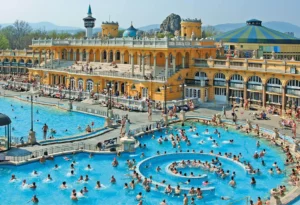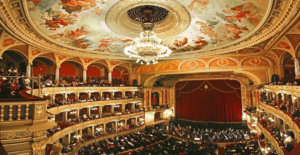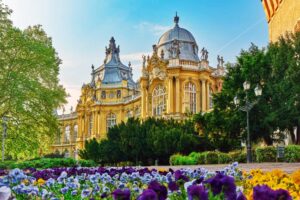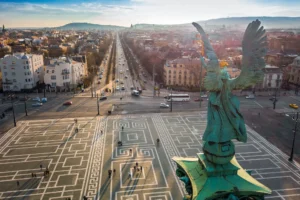Hungary’s capital city Budapest is actually made up of 3 unified cities, with Buda and Óbuda on the west bank of the Danube and Pest on the east bank. Much of the city has been granted UNESCO World Heritage Site status, and many visitors consider the city to be amongst the most beautiful cities in Europe.
The city successfully mixes its fascinating history with a brilliant, laid-back contemporary artistic style. There are a wide range of different things for visitors to see and do, from museums to thermal spas, so everyone should be able to find something that tickles their fancy.
Lets explore the best things to do in Budapest:
1. Parliament Building
The Hungarian Parliament Building, which was designed and built in the Gothic Revival style, is one of the largest buildings in Hungary, and is home to hundreds of parliamentary offices. Although the impressive building looks fantastic from every angle, to see the whole building in its full glory, it is worth viewing it from the other side of the Danube.
Tours of certain areas of the building are available daily, and run in different languages. You will need identification to get in, and your bag may be searched on entry.

2. Gellért Baths
One of the grandest spas in the city is the Gellert Bath and Spa centre, which includes an open-air pool (which turns into a wave pool), an effervescent swimming pool, a Finnish sauna, and a range of other saunas and plunge pools.
Massages and other spa treatments are also available at an extra fee. The complex was originally built between 1912 and 1918 in an Art Nouveau style, but it sustained serious damage during World War II. The whole spa was extensively renovated in 2008 to bring the baths back to their former glory. The baths are open all week for mixed bathing.

3. Heroes’ Square
Heroes’ Square (Hosök tere), which marks the end of Andrássy Avenue is home to an iconic monument which features depictions of the Seven Chieftains of the Magyars, who are believed to have led the Hungarian people from central Asia to the Carpathian basin.
Atop the central pillar is the Archangel Gabriel, who is holding the Hungarian crown. At either side of the central column are two matching colonnades, which depict a variety of other historical Hungarian figures. The impressive buildings at either side of the square are art galleries. Take care when crossing to the statue, because traffic around the monument can be erratic.

4.Hungarian State Opera House
This Neo-Renaissance building was first opened in 1884, following a commission from Emperor Franz Joseph. Outside of the building, you can see statues to Ferenc Erkel (composer of the Hungarian National Anthem) and Ferenc Liszt (Hungarian composer).
The 1200 seat auditorium is considered to be one of the best in the world for operatic performances, and it is well worth it to buy a ticket to a show.
Ticket prices start from as low as 500ft. If you cannot find time to see a show, guided tours of the Opera House are available during the day, although these usually need to be booked in advance.

5.City Park
The City Park is a wonderful leisure facility for the citizens of Budapest, and includes sports facilities, swimming baths, and a boating lake.
During the winter months, the boating lake is transformed into one of Europe’s largest ice rinks.
The park is also home to the Budapest Municipal Zoo and Botanical Gardens, the Budapest Circus and the Vajdahunyad Castle (housing the Museum of Hungarian Agriculture).
Just outside of the park you can find the Time Wheel, which is one of the largest sand timers in the world.
In this sand timer, all of the grains of glass take 1 year to fall from the top section to the bottom, and the timer is rotated every New Year.

6.Andrássy Avenue
This wonderful boulevard takes visitors from Erzsébet Square in central Pest, out to the City Park. Due to its interesting cultural heritage, it was declared a World Heritage Site in 2002.
Taking a walk down Andrássy is a great way to see a number of Budapest’s different architectural styles, including the Hungarian National Opera House, neo-renaissance townhouses and mansions, and a number of different national embassies.
If you do not fancy promenading down the boulevard, the metro line which runs underneath the Avenue is the third oldest underground railway in the world.

7.Fisherman’s Bastion
Although the Fisherman’s Bastion looks like a medieval monument, it was actually built in the early 20th century in a neo-Gothic style, specifically to act as a panoramic viewing platform across the Danube, Margaret Island and Pest.
It is named after the Guild of Fishermen, which was responsible for defending that stretch of the city walls during the Middle Ages.
The seven towers of the Bastion represent the seven Magyar tribes that helped to settle the Magyar people in the Carpathian Basin. Come at sunset to see a particularly beautiful view of the city.



